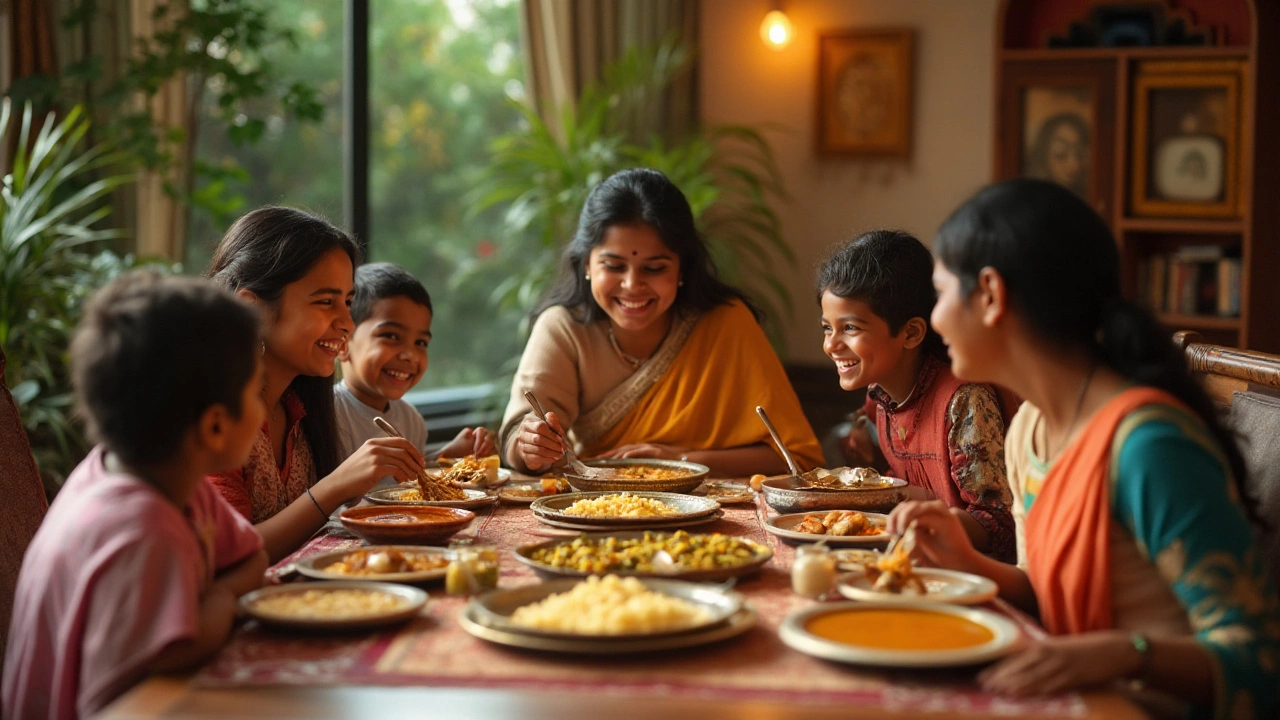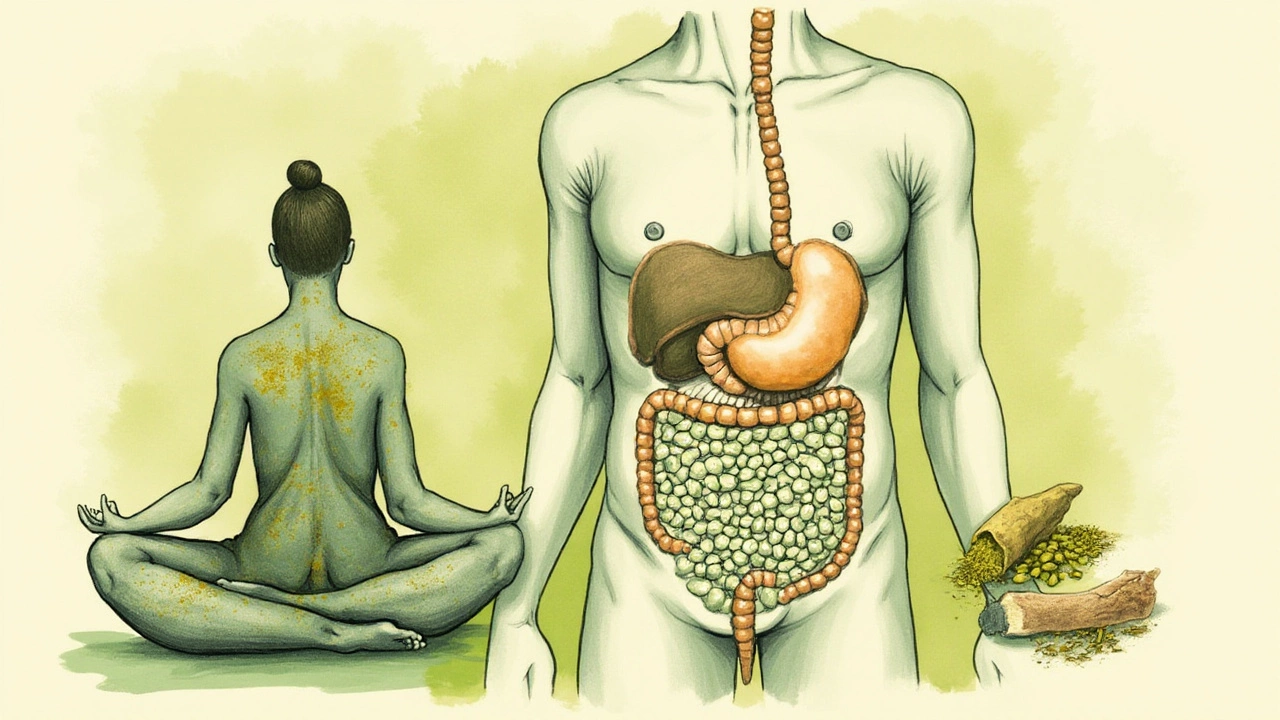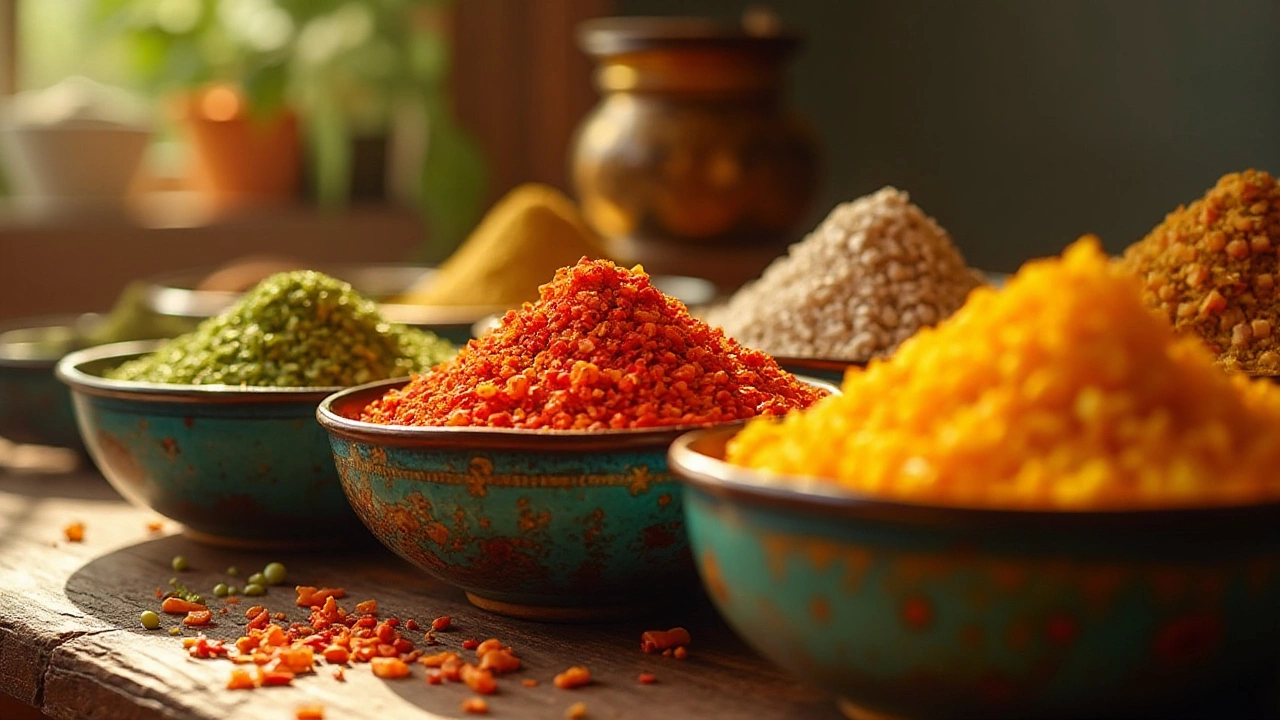In the world of Indian cuisine, dals reign supreme, offering a rich tapestry of flavors and health benefits. However, anyone new to the legume family might find themselves wondering which types are gentler on the stomach and which could cause some digestive commotion. The answer lies in understanding the unique properties of each dal variety, and what makes some of them a bit harder to digest.
Many factors contribute to the digestibility of these pulses, such as their fiber content, the presence of certain compounds, and how they're prepared. By exploring these aspects, you gain insights into making digestion-friendly choices while still enjoying your favorite dal recipes.
Stay with us as we share cooking tips and ways to modify your dal dishes to keep them light and tummy-friendly. Whether you’re a dal enthusiast or just beginning to explore its culinary wonders, there's wisdom here for everyone seeking gentle, palatable legumes.
- Different Types of Dal
- Factors Affecting Dal Digestion
- Heavy Dals and Why They Matter
- Cooking Dals to Ease Digestion
- Tips for Selecting Digestible Dals
- Nutritional Insights on Dals
Different Types of Dal
Within the realm of Indian culinary traditions, dal varieties are astonishingly diverse, each with its distinct flavor, color, and nutritional profile. Known scientifically as pulses, these legumes are staple treasures of many households, thanks to their versatility and rich protein content. At the core of their diversity are a few key players that define Indian cooking: Toor Dal, Moong Dal, Masoor Dal, Urad Dal, Chana Dal, and Rajma (not technically a dal, but often grouped with them due to similar preparations). Each type has its unique attributes that influence both cooking methods and digestibility, a notable example being Toor Dal, or split pigeon peas, highly favored for their rich, earthy flavor and ability to blend seamlessly into a variety of dishes.
Moong Dal, or split green gram, is renowned for its lightness and ease on the stomach, making it an ideal choice for those seeking a more digestible lentil option. Its popularity is evidenced by its frequent inclusion in Indian Ayurveda diets, celebrated for its cooling properties and ability to balance the body's doshas. In contrast, Urad Dal, known for its creamy texture, is nutrient-dense but often considered heavier due to its high protein and fiber content, which might pose a challenge for some to digest.
The choice of dal often extends beyond taste and into the realm of nutritional goals. According to a study by the Food and Agriculture Organization, pulses like dals are high in protein, low in fat, and offer a wealth of essential nutrients including iron, potassium, and folate.
"Pulses are climate-resilient, nutrient-dense, and have a crucial role in promoting food security and nutrition," states the FAO report, highlighting their global significance.Considering properties like fiber content and cooking adaptability informs the cook's choice and how the dal should be prepared, influencing everything from soaking times to spicing. Thus, personal experience, dietary needs, and recipe demands all play a role in selecting the appropriate dal for a meal.
Factors Affecting Dal Digestion
Understanding which types of dal might be harder to digest begins with exploring the various properties intrinsic to each variety. One notable factor is the fiber content, which can significantly influence how easily a dal is digested. Legumes are natural powerhouses of fiber, which is fantastic for the body but can be challenging for the stomach, especially if consumed in large quantities. Fiber is crucial for maintaining healthy digestion, but an overload can lead to feelings of fullness or bloating. Some may find green gram, or moong dal, to be the easiest on their system, while varieties like urad dal prove to be heavier due to their rich, earthy makeup.
Another factor that can't be ignored is the presence of oligosaccharides, complex sugars found in many legumes. Our bodies find it difficult to break down these sugars completely, resulting in fermentation by gut bacteria which often leads to gas production. Presoaking and cooking dals thoroughly can help break down some of these troublesome compounds, making digestion a much smoother process. This practice has been rooted in traditional cooking across many cultures and stands as a testament to its effectiveness.
Cooking Techniques and Digestion
The way dals are cooked can greatly affect their digestibility. Introducing spices like cumin, turmeric, or ginger in the cooking process does more than enhance flavor; these natural ingredients help in soothing and balancing the digestive system. For example, adding a pinch of asafoetida, or hing, is a widely recommended trick for reducing gas and bloating issues associated with certain dals. Furthermore, prolonged cooking at lower temperatures helps break down the complex proteins and fibers, making the dals more palatable and kinder to the stomach.
Personal Sensitivity and Dietary Tolerance
It's important to note that each individual's digestive system is unique and personal tolerance plays a significant role here. Some people may have a robust digestive system that can easily handle the bold characteristics of a dal recipe, while others might need to tread carefully. Factors like age, existing digestive conditions, and dietary habits over time influence how our bodies respond to these legumes. Adjusting portion sizes and experimenting with different varieties of dal can help figure out what works best for you. Interestingly, the journey to finding one's suitable dal might just offer delightful variety to your culinary adventures.
Culinary expert Madhur Jaffrey once said, "The balance of taste and nutrition can transform a simple legume into a soulful, harmonious dish."
Moreover, pairing dals with companion foods that are easier to break down can be advantageous. Combining dal with rice, for instance, creates a complete protein and makes the meal more harmonious for the digestive system. In some cultures, including south India, rasam and sambhar are frequently paired with rice and dal to promote better digestion. These complex relationships within food highlight how cultural practices often hold profound nutritional wisdom verified by modern science.

Heavy Dals and Why They Matter
The variety of lentils that fill our culinary palettes with delightful flavors also brings with them a unique consideration — digestibility. Not all dals are equally friendly to our digestive systems. Some, like urad dal and toor dal, are known to be a bit more robust in terms of heaviness. Understanding why certain dals are considered 'heavy' is essential for anyone exploring legume preparations for everyday meals.
Urad dal, commonly used in dishes like dal makhani, can be slightly more taxing on digestion due to its dense composition and higher amounts of protein and fiber. When we eat, fiber takes longer to break down, which can cause more work for our digestive system. This isn't necessarily a bad thing, as it helps in promoting a feeling of fullness and aids in regular bowel function. Just be mindful if you have a sensitive stomach. Similar to urad dal, toor dal bears its weight due to the decent amount of insoluble fibers it contains. While beneficial for gut health, it might make some individuals feel a bit bloated or gassy, particularly if they are not regularly consuming high-fiber foods.
It's interesting to note a survey that reported about 30% of people avoiding these varieties, as they perceived them as causing discomfort. But the story doesn’t end here. These dals carry immense nutritional benefits, making them valuable additions to a balanced diet. The trick is in how they are prepared. Longer soaking and proper cooking techniques can significantly improve their digestibility.
Aurora Davis, a renowned nutritionist, emphasizes, "While urad and toor dal may feel heavy, they are nutrient powerhouses. Prepared with the right methods, they can seamlessly fit into a healthy routine without causing distress."
Preparing heavy dals involves traditional yet effective techniques. Soaking them overnight can help break down complex sugars and fibers, while pressure cooking them ensures they are soft, reducing the digestive load. Adding spices like cumin and ginger, known for aiding digestion, can be very helpful too. Such practices are pearls of wisdom that have been passed down for generations, demonstrating that while some dals might appear imposing, they are manageable and beneficial when tackled with care.
Why it Matters
Considering the digestibility of dal, especially the heavier ones, matters not just for comfort but for overall health. Regular consumption of properly prepared heavy dals can contribute not only to digestive health but also to a lower risk of chronic conditions such as heart disease and diabetes, thanks to their rich fiber content. Moreover, understanding which dal varieties might weigh heavier allows for more informed dietary choices, particularly for those managing specific health conditions or digestive concerns. Embracing the 'weight' of these dals with informed preparation allows people to enjoy their benefits to the fullest.
Cooking Dals to Ease Digestion
Cooking dal involves more than just boiling the lentils until they are tender. The process holds the key to unlocking not only flavors but also improving the digestive experience your body has when consuming these nutritious legumes. A prominent method of enhancing the digestion of lentils is soaking. By soaking your chosen dal in water for a few hours before cooking, you initiate the breakdown of phytates and other anti-nutritional factors, which hinder nutrient absorption and digestibility. Soaking can significantly decrease cooking time while making the dal softer and more digestible.
Apart from soaking, incorporating spices known for aiding digestion can transform your legume dish from a tummy-troubling meal into a harmonizing feast. Consider using spices such as cumin, coriander, fennel, and ginger. Not only do these spices bring layers of flavor to the dish, but they are celebrated for their ability to assist in the digestive process. The warming, soothing properties of ginger and fennel, in particular, are noted for alleviating digestive discomfort.
The cooking technique you choose can also have a considerable impact. Slow simmering allows dal to break down more thoroughly, with gentle heat ensuring that the nutrients stay intact and the legume softens uniformly. Slow cooking also allows all the elements, like spices and seasonings, to meld seamlessly, providing a cohesive taste that's easier for your body to process. It's no surprise that many families treasure their pressure cookers for preparing dal swiftly while preserving its digestibility.
Preparing the Right Consistency
Achieving the right consistency can make a world of difference—both in taste and how it sits in your stomach. A mushy texture often indicates well-cooked dal, which tends to be easier on digestion. Whether you prefer your dal thick or thin, adjusting the water content while cooking can help you find the balance that suits your palate and stomach comfort. Consider a creamy, smooth texture achieved by blending the dal post-cooking, perfect for soups and stews, which can be gentle on the digestive tract.
It's worth noting that cooking dal with certain vegetables can enhance its digestibility. Adding gourds, carrots, or spinach not only boosts nutrition but can help break down the dal further through their inherent moisture content and enzymes. Many culinary traditions emphasize this harmonious pairing, creating dishes that are holistic in what they offer nutritionally and how they support bodily functions.
A well-documented staple of healthy diets, Lentils are often hailed. David L. Katz, founding director of the Yale University Prevention Research Center, emphasizes that including lentils in your diet offers a 'nearly perfect option for health'—proving that balancing taste, nutrition, and digestibility is indeed an attainable goal.
Finally, remember the role of occasional fermentation or sprouting, which brings about remarkable changes in the nutritional profile of dal, enhancing amino acid content and even furthering digestibility. Fermented lentil dishes, like the famed South Indian dosa, are not only a treat for your taste buds but offer a lighter and more digestible form of dal, one that your gut might very well thank you for.

Tips for Selecting Digestible Dals
Choosing the right dal can be quite the task, especially when each variety hosts a multitude of benefits and unique flavors. But when convenience and comfort for the tummy are paramount, certain types stand out as being more friendly in the digestion department. The trick lies in understanding how different dals integrate into your diet and recognizing which cause less gastrointestinal distress. An important starting point is considering the fiber content of the dal. Dals like urad dal have higher fiber than their lighter counterparts. While fiber is indeed beneficial, those with sensitive stomachs might find it results in discomfort and bloating.
For ease in digestion, experts often suggest starting with moong dal. This dal, known for its gentle demeanor on the tummy, is frequently recommended for illnesses requiring a soothing touch. It's a staple in many detox diets due to its low fiber content, which helps it be more easily broken down by the body. Additionally, soaking dals before cooking can greatly enhance digestibility. This traditional practice not only reduces cooking time but also begins the breakdown of complex sugars, easing the digestive process.
Moreover, it’s wise to consider personal dietary reactions and tolerances. Some individuals might find chana dal to be especially heavy, much due to its density and size. Opting for split dals, such as toor dal or masoor dal, can be another way to lessen the digestive load. Split dals tend to break down more readily during cooking and digestion, owing to their decreased density and exposure of inner structures.
"Moong dal and masoor dal rank high for their digestibility and nutritional profiles. These lentils are often a part of easier diets around the globe." — Culinary Nutrition Expert
Spices, too, can play a transformative role in dal dishes. Incorporating digestion-aiding spices like cumin, ginger, and asafoetida can mitigate the heft of heavier dals. Apart from adding a flavorful kick, these spices have known properties that alleviate gas and enhance the digestive process. Some cooks prefer creating a tadka or tempering with these ingredients to bring out their full potential.
Lastly, the nutritional profile of each dal should not be overlooked. Aim to balance your meals with lighter dals that still offer essential nutrients. Masoor and moong dal offer good amounts of protein without a high burden of fiber. Consider alternating these dals based on your meals and dietary needs, making sure to pair them with other gut-friendly foods. By attending to these simple details, you can indulge in a heartwarming dal dish that both satisfies and nourishes the body.
Nutritional Insights on Dals
When it comes to nutritional powerhouses, dals undoubtedly take center stage. Integral to celebrations of health and culinary traditions across South Asia, they boast a remarkable range of nutrients. From the high protein content essential for body repair and growth, to a richness in essential vitamins and minerals, dals have it all. Lentils like moong and toor dal, for instance, offer not just proteins but are laden with iron and potassium, vital for heart health and energy maintenance.
Dals are one of the best plant-based sources of protein, a boon for vegetarians and vegans aiming to meet their dietary protein requirements. Red lentils, commonly referred to as masoor dal, are champions in this arena. They provide a complete protein source, delivering essential amino acids that our body cannot synthesize on its own. Notably, the presence of lysine is prominent, important for tissue growth and immune function.
The fiber content in dals is another applauded feature. It's particularly beneficial for digestive health, playing a role in preventing constipation while also aiding in maintaining a healthy cholesterol level. The soluble fiber present in dals such as urad dal forms a gel-like substance in your stomach, promoting a feeling of fullness and mitigating the risk of overeating. This mechanism also helps in regulating blood sugar levels, preventing sharp spikes, which is crucial for individuals managing diabetes.
Dr. Ritu Verma, a nutrition expert, once said, "Incorporating a variety of dals in your diet ensures a wholesome intake of nutrients, vital for a balanced diet."
Dal digestion doesn't only depend on the type but also on how it is cooked and paired with other foods. Cooking with ingredients like turmeric and ginger can enhance digestibility and provide added anti-inflammatory benefits. Additionally, incorporating dals in soups or stews with greens and vegetables can amplify the nutritional profile, making meals both hearty and healthy. Of course, moderation and variety are key. Eating different types of dals can ensure you're getting a broad spectrum of essential nutrients.
Lastly, it’s crucial to mention that dried pulses are affordable, making them accessible and sustainable as dietary staples. Their long shelf life also means we can enjoy them year-round, providing sustenance in various forms without the worry of spoilage. By including a mix of easily digestible options such as green gram (moong dal) along with the more nutrient-dense but heavier options like channa dal, you can maintain a balanced diet that supports both health and taste.
